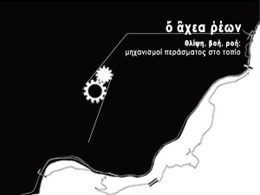STUDENTS PROJECTS
PROJECTS2013
Students : Megaritou Mirto, Papaspirou Stella-Konstantina, Tasioula Ilia
Surpervisor : Kourkoulas Andreas, Mari Ifigenia
Consultants: Vasilatos Panagiotis, Xenou Vana
National Technical University of Athens, school of Architecture Engineering
Presentation date : November 2014
The landscape is mapped and analyzed, therefore, in terms of view, motion of the body, sound, light and shadow, designed to lead to the selection of a circular route that meets the criteria that we have set and it is based on the network of existing walking trails. We choose to create point interventions at places that already have recorded memories. It is about spatial-construction mechanisms that incorporate the myth and transform its meaning into the crossing a passage.
Our thesis is set in Acheron river, in Epirus, Greece and its main subject is the redefinition of the relation of the myth with the landscape.
Since antiquity this place has been highly related to the mythological element and the concepts of woe and death, as derives from the etymology of the word, "achos" or "achos" which means woe or clamor and from the verb "reo", flow.
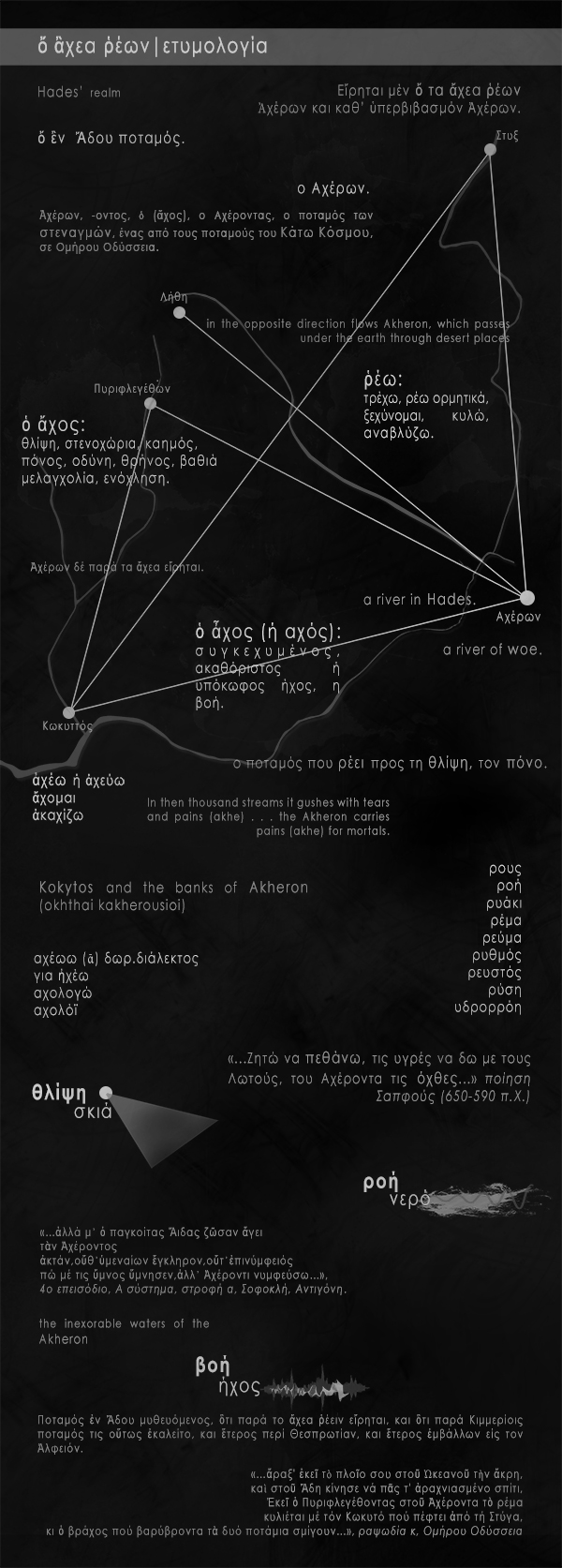
It is no coincidence that the ancient Greeks chose this place to set the Underworld. Intense geomorphology on one hand, and the almost downward movement of man through the whirling river on the other hand, point out key mythological elements of the site, which we handle as spatial tools and shapes to draw our route.
The landscape is mapped and analyzed, therefore, in terms of view, motion of the body, sound, light and shadow, designed to lead to the selection of a circular route that meets the criteria that we have set and it is based on the network of existing walking trails.
We define, in this course, a starting and an ending point to organize the spatial experience offered by nature and finally proves that the landscape can be organized in architectural terms.
The intervention strategy is similar to the technique of acupuncture. We choose to create point interventions at places that already have recorded memories. It is about spatial-construction mechanisms that incorporate the myth and transform its meaning into the crossing a passage.
The relative position of one passage to the next one and to the landscape is defined by a continuity of gazes and movements during the circular path. Through every construction the gaze turns to the destination point and the circle of wandering is completed.
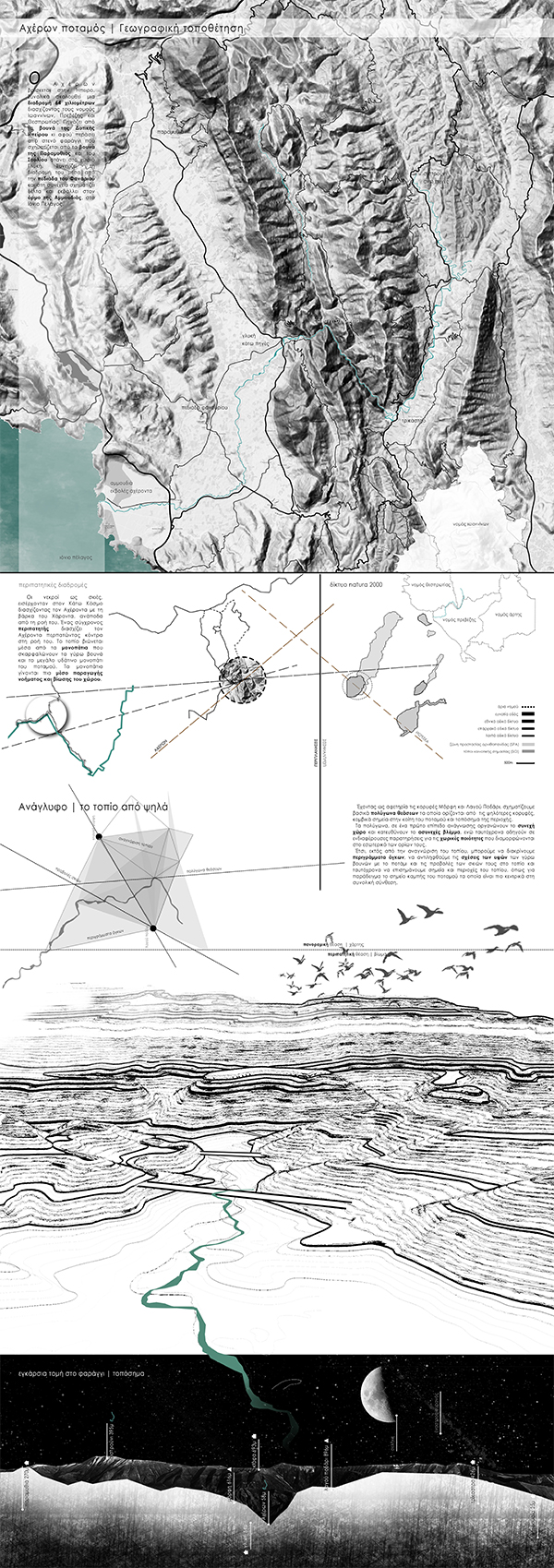
Acheron is situated in Epirus, in Greece. Springing from the mountains of western Epirus it crosses the departments of Ioannina, Preveza and Thesprotia, and finally reaches Glyki village. Acheron river continues its route through the valley of Fanari and after forming a delta it flows into the Ionian sea. Its route is 64km long.
By studying and mapping the terrain that surrounds Acheron, we gain panoramic view of the landscape which completes the fractured view of observation.
This study of the terrain through the panoramic view of the landscape, allows us to organize a transversal section of the canyon which gives us a more geometrical approach to the study of size, proportion and measurement of the landscape.
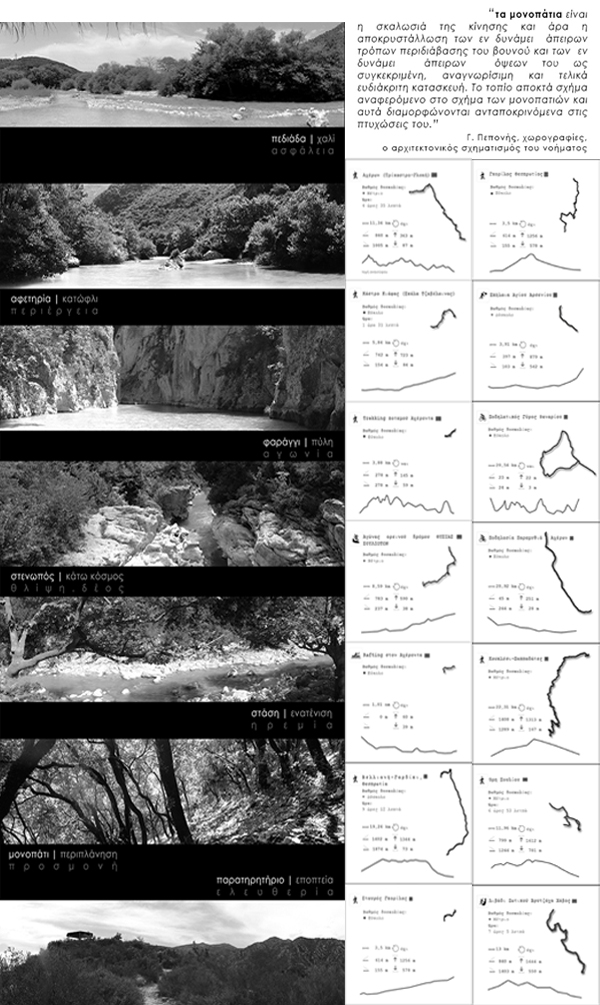
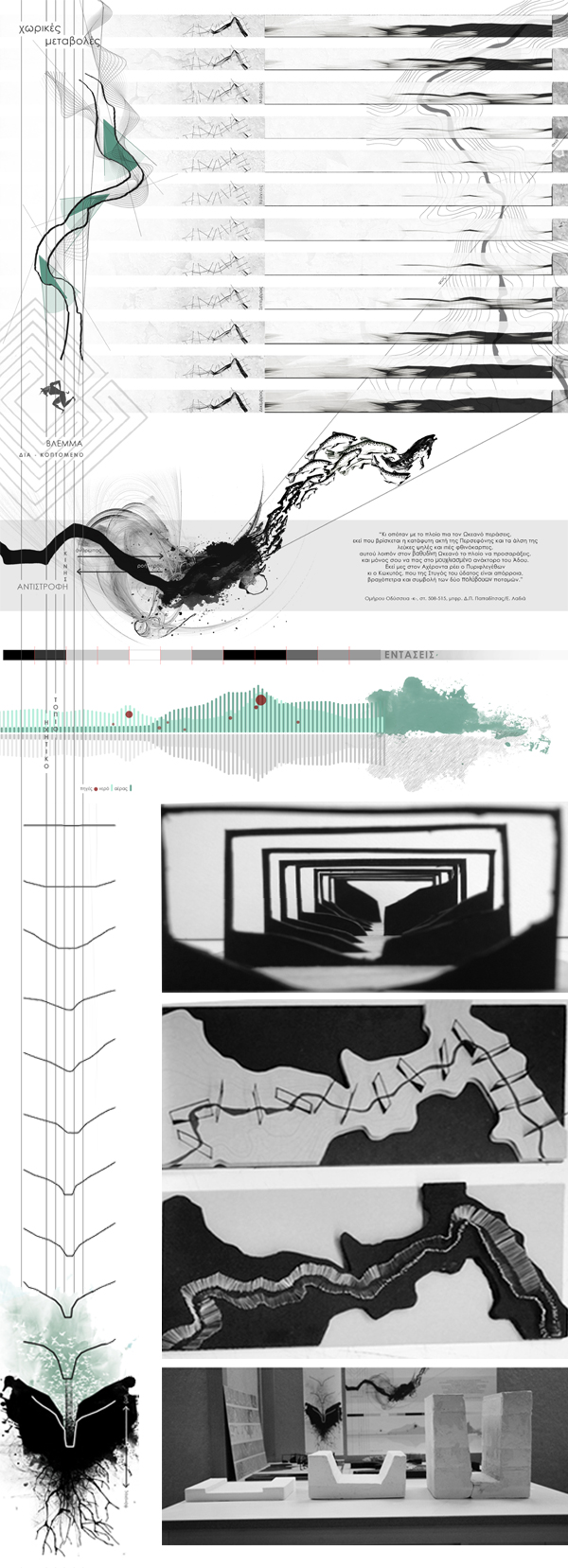
As we begin the wandering into the landscape, the river's width is large (about 14 meters), it is shallow and the field of view is wide. The route to the canyon helps us observe the shapes of the landscape and the spatial variation. We begin by mapping the landscape in terms of movement, light and shadow, sounds and gaze.
The only sounds that we can listen are the flow of water and the sound of the air. The clamor of air is amplified due to the labyrinth-like shape of the river. As we turn following the shape of the river we lose sense of the orientation. Every turn is framing a different view of the canyon. As we enter deeper into the canyon, we leave behind the manmade environment and we are moving towards the immensity of nature.
The texts of Nekyia and the myth of Orpheus were the cause of our acquaintance with the place of Acheron. Together with the analysis of the landscape we formed a trail which contains elements of the myth.
The myth teaches us that the descent to the Underworld is symbolic and it is connected with the acquisition of knowledge. In terms of landscape, throughout the route we are collecting fractals which by the end of our wandering they are connected into a whole spatial experience.
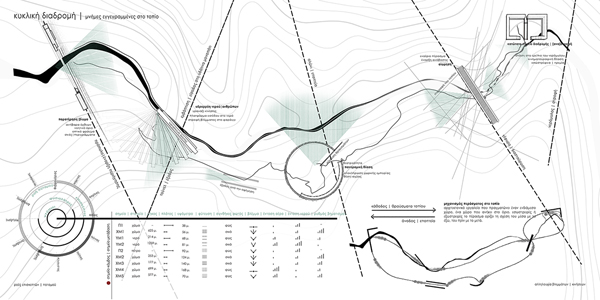
Our route is a circular one: It begins and ends at the same point. It is a route that follows the form of the landscape and is led by the gaze. It is the transition from the landscape seen as experience to the landscape conceived as a map.
This route which lasts 2,5 hours is interrupted by 6 stops. 6 points whose exact position was chosen as a result of the analysis of the landscape and the already existent routes. These points are defined as points of transition from one spatial experience to the next one.
The interventions are small scale constructions forming archetypic structures. They are made of oxidized steel (cor-ten) whose raw texture is similar to nature's elements.
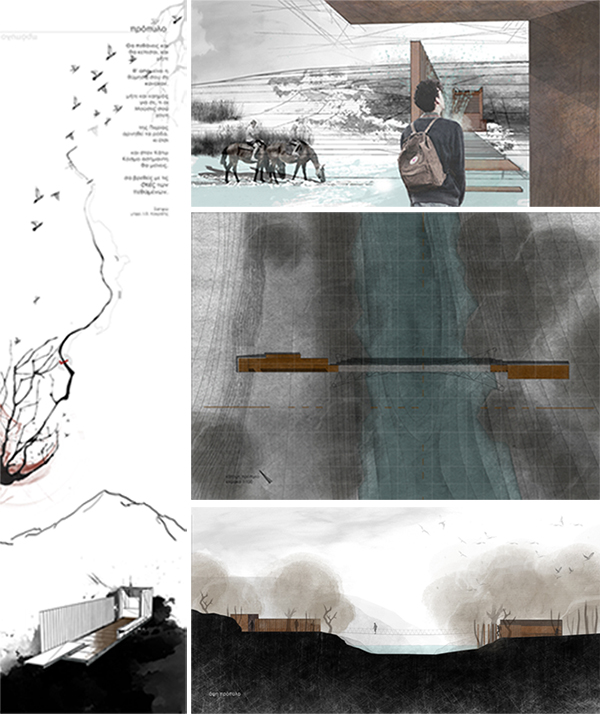
The 6 points are the following:
The porch: it is the starting point of the route. It consists of two metallic boxes which filter the flow of the visitors.
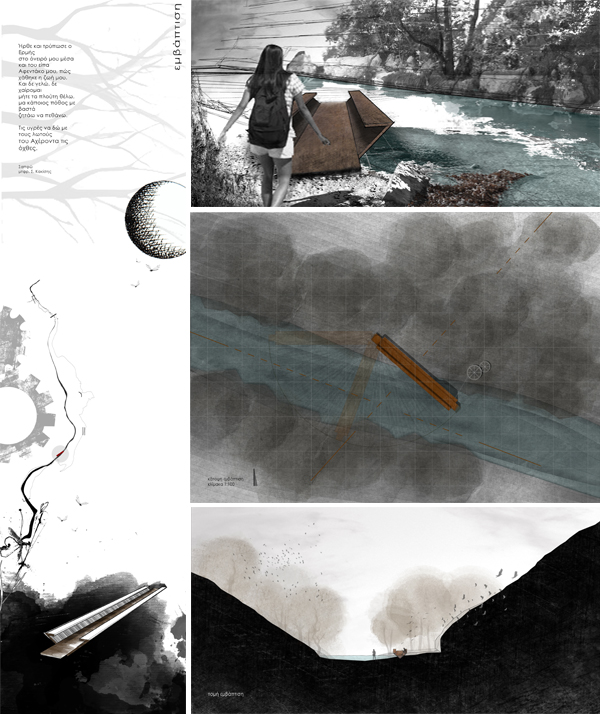
Immersion: It is a construction, similar to a gutter that leads the visitors from dry land into the river.
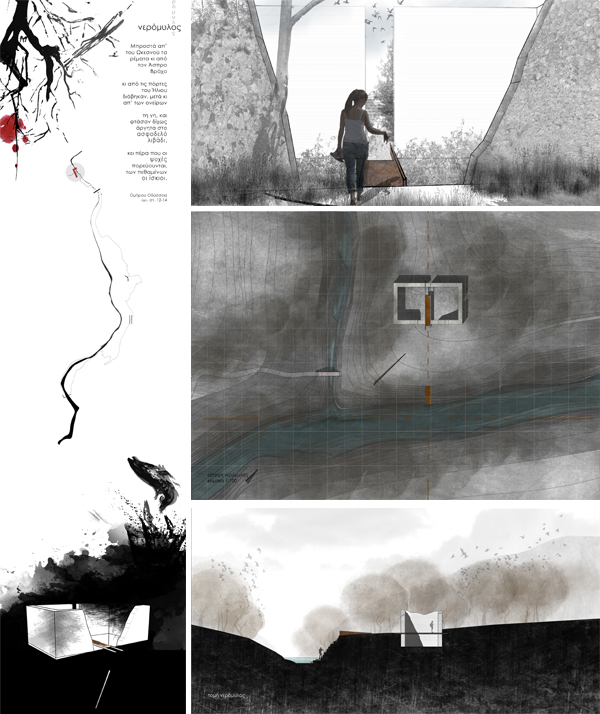
The turn: Surrounded by the ruins of an old watermill, it is a turning point of our route and the beginning of the way back.
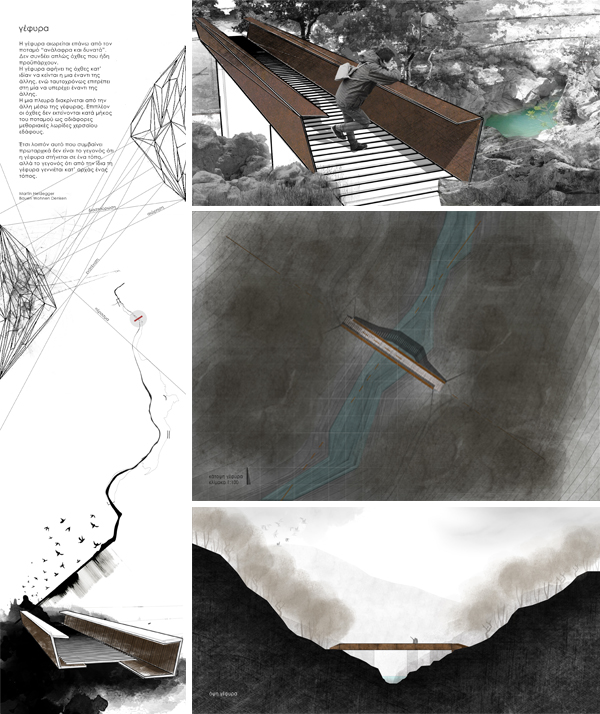
The bridge: It links the two banks of the river. It offers a last glance of the water before the final route.
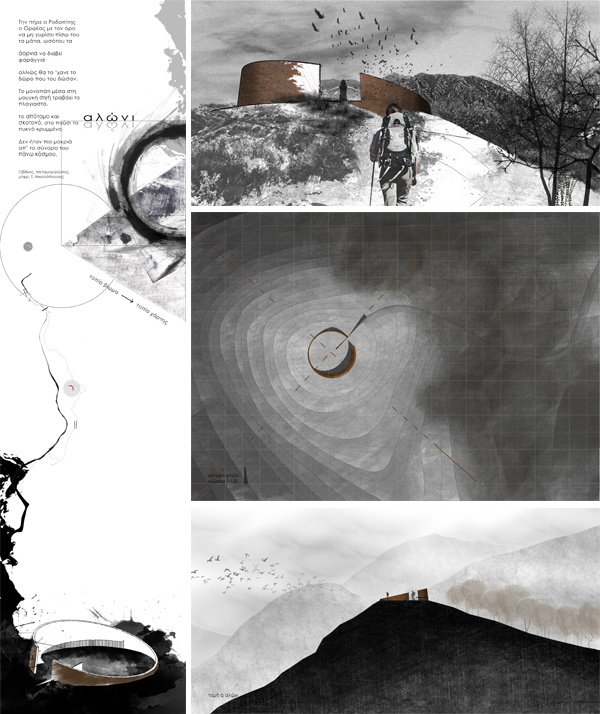
The threshing floor: A point of panoramic views, supervision and completion of the spatial experience.
The tunnel: An already existent tunnel in the mountain meant for a road construction. It is the final point of the route and a conceptual exit of the whole experience. It completes the circle of the narration.
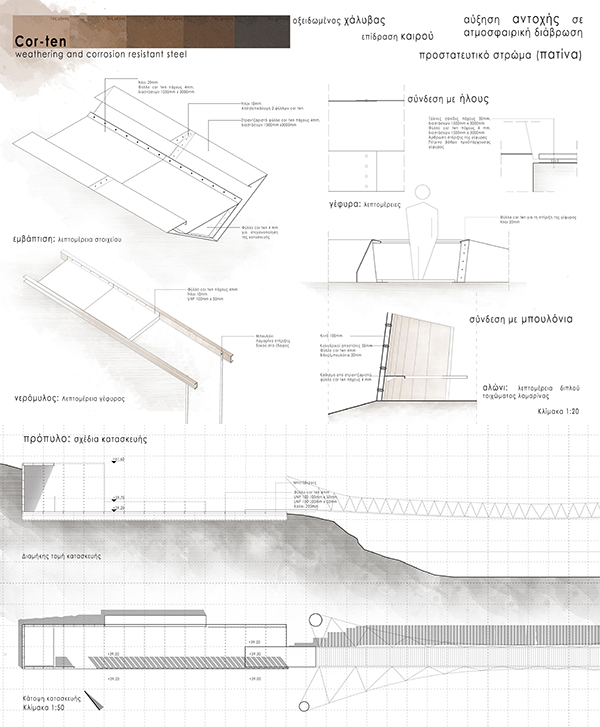
We began this study as a result of a general interest in the investigation of the myths and this particular landscape. We are dealing with the myths linked with death, i.e. the descent to the Underworld.
For the Greek world, the decent and the ascent symbolize death. Particularly in the myth of Persephone, the descent of the seed during sowing is a symbol of death. The images of death rituals symbols are inextricably linked to the sowing thereby demonstrating a potential life that stands in the way of preparation. Through the mythological world death is not seen as an end but as a beginning of something new.

